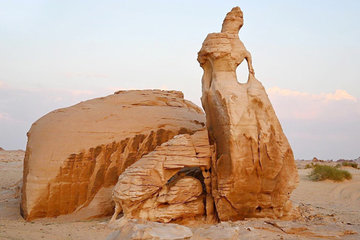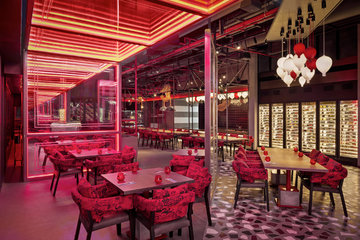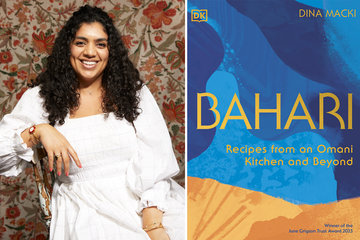
From bygone splendour to modern installations, Vienna has been reinventing itself year after year to reach its standing as the most desirable capital of Europe.

MuseumsQuartier©WienTourismus/Peter Rigaudmax
For the past few years, Vienna has been rated as the best city in the world to live in. According to a number of surveys, Quality of Living ranking, wide public spaces, high standards of living, and accessible culture are what make this town so great. And it is forever reinventing itself to dust off the lacklustre image of past decades.

St. Stephen’s Cathedral, Haas-Haus ©WienTourismus/Peter Rigaud
Amazing Architecture
Take for instance the Haas Haus, a mirrored glass postmodern building on the Stephansplatz, a town square in the heart of the city. It overlooks the impressive St. Stephen’s Cathedral featuring towering Gothic spirals, one of the city’s main tourist attractions. This modern building placed on a historic square is a symbol of 21st Century Vienna, where old meets new. I have been visiting this splendid town yearly for over 20 years now and have seen the changes welcomed by locals like a breath of fresh air on a hot summer’s day. There is so much going on with young architects boosting new deigns into the town’s predominant styles of Baroque and Art Nouveau, with some nurtured by the late, neo-futuristic Zaha Hadid, who was a visiting professor at the University of Applied Arts.

View of Heldenplatz and Museums© WienTourismus/Christian Stemper
Classical Strains
Still, when treading the streets of Vienna, once home to great composers like Joseph Haydn, Wolfgang Amadeus Mozart and Johann Strauss, one is constantly reminded of its epic culture by Mozart lookalikes trying to peddle tickets to mediocre classical music concerts. Give these a miss and instead experience the real deal: the Vienna Philharmonic Orchestra. It’s best to book ahead but sometimes there are returns on the day. And, if you are a fan of classical music don’t miss the gem of a museum, the Haus der Musik. It’s tucked away in an alleyway and a little hard to find but worth the effort to discover the history of Austria’s classical music composers.

Danube & Danube Island-at the Old Danube, ©WienTourismus/Heinz Angermayr
Vienna’s Ringstrasse, a grand boulevard built during the reign of Emperor Franz Josef I in 1857, links the outer districts with the city centre. Stroll along to take in the plenitude of historic buildings passing the Kunsthistorisches Museum and Natural History Museum, the Burgtheater, the City Hall and the Parliament to reach the Vienna State Opera. In the afternoon the State Opera offers cut price standing tickets a few hours before curtain call to afford everyone a chance to see the most stunning productions in the world.

Café Diglas Coffeehouse © WienTourismus:Christian Stemper
Coffeehouse and Food Delights
The Ring is home to several coffeehouses and leads to many more. Actually, Viennese coffeehouse culture is a national institution and was even added to the UNESCO cultural heritage list in 2011. The city boasts in excess of 800, some are real classics featuring elegant waiters serving in Art Deco settings. One of the most famous is in the Hotel Sacher, a well-deserved tourist attraction as the chocolate Sacher cake is really out of this world. Further into the heart of the city, the elegant Demel café has been creating pastries since 1857 and serves a delectable cream cake (the recipe is a well-guarded secret) and probably the best hot chocolate in town. The nearby gourmet shop and restaurant Julius Meinl am Graben, Vienna’s version of Fortnum and Mason, is a good place to stock up on coffee beans, spicy biscuits and chocolates. And to sample Austria’s Wienerschnitzel, traditional breaded veal, head to the renowned lunch spot Figlmuller, which serves a huge schnitzel, as enormous as the plate it arrives on. And, while on the subject of food, the Naschmarkt (Nasch means nibble) is great for nibbling on street food and fresh produce from Austrian farms. From here set off for early evening fun to Prater, Vienna's permanent fairground, and the Riesenrad, the big wheel, from which to take in far reaching views of the city. Afterwards walk to the waterside parkland and the Donauinsel, a long island in the middle of the Danube River with walkways and numerous outdoor cafés.

Heading Out And About
Well worth a detour off the traditional tourist track is the Hundertwasserhaus near the river; this municipal housing project designed by Friedensreich Hundertwasser is a surreal fantasy of garish shapes and colours. From daring modernity, take a journey back in time to see the dazzling white Lipizzaner stallions of the Spanish Riding School, around for over 400 years, prance in the Hofburg's grand courtyard giving an impressive display. Then head on to the Mariahilfer Straße, a mile long pedestrian area lined with shops selling elegant Dirndl and Lederhosen, the traditional Austrian attire, as well as several outlets of the glitzy Swarovski, an Austrian producer of crystals since 1895. A visit here in December is really magical as the street is lined with chestnut vendors and seasonal markets spring up at Karlsplatz, Maria-Theresien-Platz and the Schonbrunn Palace The latter, the Habsburgs' summer palace, boasts splendid state apartments and expansive landscaped gardens. A shady path through the adjourning parkland leads to the world's oldest zoo.

Museums: Belvedere, Parks & Gardens, ©WienTourismus/Hertha Hurnaus
The Museum Hub
Traditional meets contemporary Vienna in a stunning contrast at the Museumsquartier, the museum area. The Leopold Museum exhibits 19th century art, the Kunsthalle 20th century works, and the Mumok is a showcase for modernity. The Museumsquartier has become a real hub for studios of artists and designers, as well as eateries. A leisurely lunch on the terrace of the restaurant Halle on a sunny day affords a view of the contrasts in Vienna, the former emperor’s winter riding hall and stables and the concrete and steel façade of Mumok, stunning examples of splendid Vienna’s past and present. Vienna, the city that truly deserves to be rated as the world’s best to live in.

Roses at Volksgarten, © WienTourismus/Christian Stemper

















